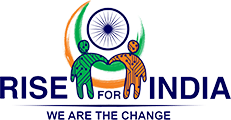Education is the most powerful weapon which you can use to change the world.
― Nelson Mandela
Whenever we think of girl education in India, all we are reminded of are the discrepancies in statistics and the problems faced by girls. The month of March has a day which gives every woman across the globe to celebrate womanhood in a big way. Well I guess being a woman is a celebration in itself, but we wouldn’t mind if we get a chance to celebrate ‘womanhood’ in a grand manner. Our nation has quite a humungous population and the gender ‘female’ forms a major part of the same. Till date our nation is trying to push the statistics of literate women in our country a little up with every passing year.
We belong to a nation where social norms have a strong hold on our lives and behaviour as well. Girl education in India has faced the brunt of stringent social norms during its initial phase. Government schemes like Sarva Shikha Abhyan, mid day meals etc. did manage to pull some students into classrooms. But the affect of these plans was short lived. Today our country is planning to create smart cities but doesn’t the question of their viability arise in our minds? With a population that consists of men and women who still dream of electricity and clean drinking water, will the concept of smart city be accepted? Women who have lived their lives inside the “ghoonghat” (veil) will they be able to use technology or hop up even an escalator? We need cities before we dream of smart cities.
Our nation has not yet reached the benchmark of 100% literacy and to ensure a brighter future, our policies should concentrate on making smart people by providing them with education and not just literacy. Many girls each year get enrolled in schools but never reach the classroom. There is not one but quite a number of reasons behind this phenomenon. Girls in villages are married off at an early age, they look after their younger sibling while their mother cooks or is giving birth to another one. Even the safety of girls is one major reason why often girls in villages and districts leave school as soon as they hit puberty or even before that. According to a statistic published by UNICEF in 2005-Only 70% of girls between the age of 6 and 10 attend primary school as against 76% boys in the same age group.
Till date the percentage of girls who get to attend school in India continues to remain low in comparison to that of boys their age. The situation is a lot worse at the upper primary level where only 40% of girls attend school. The main factors influencing this disparity include poverty and the continuing hold of social and cultural beliefs that discriminate against girls. A workshop was held by UNICEF in Delhi during the year 2005 in which girls from seven different states of India, demanded for equal access to education. These girls had attended school even after facing strong opposition from families.
Now let’s analyse the situation almost a decade later, in an article published by The Guardian in the year 2013, there were examples of girls hailing from the lower strata of society who faced problems every day while commuting to school. A girl from Madanpur Khadar, South Delhi was banned from going to school after her family found out that she was being eve teased by some street urchins. Was she responsible for their behaviour? Why was she denied the right to education? What was her fault?
Students going to government schools face a lot of problems which range from overcrowded classrooms, absent teachers and unsanitary conditions. The dearth of primary school teachers has been a problem that government is still tackling. According to a 2010 report by the National Council for Teacher Education an estimate of 1.2 million teachers were needed to fulfil the RTE (Right to Education) Act requirements. Further the RTE Forum also reported that 21% of teachers recruited weren’t professionally trained.
But as time passes there are innumerable examples of mothers hailing from financially weak socio-economic backgrounds who have taken a vow to educate their child. Domestic helps, maids, nannies serving in houses of South Delhi and other parts of India as well are now hell-bent in providing not just literacy to their children but education. They dream of seeing their children as doctors, engineers, teachers, holding government jobs and having a secure future. It is these changes in the thought process of Indians on the whole that will make the nation prosper and also have a brighter future.
You educate a man; you educate a man. You educate a woman; you educate a generation.
― Brigham Young

